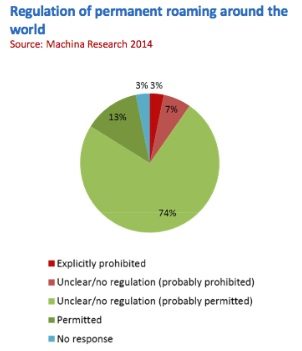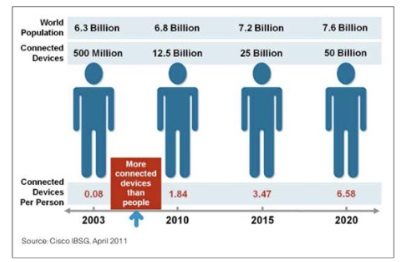Claudia Bacco, Managing Director – EMEA for RCR Wireless News, has spent her entire career the telecom, IT and security. Having experience at an operator, software and hardware vendors and as a well-known industry analyst, she has many opinions on the market. She’ll be sharing those opinions along with ongoing trend analysis for RCR Wireless News.
This week London was host to the “Internet of Things” World Forum event. A mix of enterprises, looking to understand how the world of IoT will impact their businesses going forward, as well as telecom operators and various hardware/software vendors pitching their solutions, were among those in attendance.
It was apparent that there is still a lot of work to be done to clarify the definition of IoT. As a rapidly growing area, there are many new market entrants and terms coming into play. Is it M2M or IoT, is one a subset of the other or do they have discrete differences? It seemed the presentations flip-flopped between these terms. Not to take away from any of the presentations, just an illustration that the industry players themselves are still evolving on their terminology.
 Some highlights from Day One include statistics and innovative visions for future services. Machina Research kicked off the event talking about the opportunities and barriers for IoT. One of the key barriers to consider is the challenge of roaming, especially in Europe where it is very easy to roam across countries in a matter of hours drive time. The question also pertains to national roaming. Although there is regulation coming in the EU to eliminate roaming, this topic is of concern to companies thinking about incorporating IoT technology into things that move, such as vehicles and shipping containers. In fact, they said that 74% of regions worldwide were unsure as to the implications of using permanent SIMs in IoT from a regulatory perspective.
Some highlights from Day One include statistics and innovative visions for future services. Machina Research kicked off the event talking about the opportunities and barriers for IoT. One of the key barriers to consider is the challenge of roaming, especially in Europe where it is very easy to roam across countries in a matter of hours drive time. The question also pertains to national roaming. Although there is regulation coming in the EU to eliminate roaming, this topic is of concern to companies thinking about incorporating IoT technology into things that move, such as vehicles and shipping containers. In fact, they said that 74% of regions worldwide were unsure as to the implications of using permanent SIMs in IoT from a regulatory perspective.
Jaguar Land Rover spoke about the opportunity for IoT in the connected car to disrupt the current value chain in the automotive industry. An example from Alibaba set the discussion in motion related to auto purchases in the China marketplace. They are able to monitor purchases that indicate a baby has been born and, depending on location, predict that 9 months later a car seat and new vehicle will be purchased.
Now let’s take that to the next level. There are between 100 and 200 electronic control units in vehicles today. What if they were connected and sharing information with a central database, such as the weather conditions where each vehicle is located. Will Jaguar Land Rover provide weather service in the future? Predictive analysis of weather is a fun option, but what about predictive analysis of your vehicle’s performance and advance warning of impending mechanical and maintenance issues – helpful or an invasion of privacy? You decide.
My favorite analogy was that of a 1998 mobile phone vs. an auto. In 1998 your mobile phone didn’t evolve. You bought it and it did the same things until you bought a new one. Just like a car. Now think of how often your phone evolves and can be personalized through software updates and apps. Now consider that for your car. Innovation is limitless here, but will take time for regulation, privacy and security requirements to catch up to everyone’s imagination.
Some highlights from Day Two included more statistics and an idea for a new business model. The predictions for IoT growth in the next five years are staggering. Tele2 Group talked about a PSFK report from earlier this year that found that 96% of companies surveyed will be using IoT in their business in some way in the next three years. But on the flip side, the speaker referenced statistics from Fortinet saying that 69% of companies believe the use of IoT will open their infrastructure to additional security breaches.
 Aeris shared projections from Cisco that indicate a huge growth potential in connected devices, and a projection from John Chambers that IoT has the potential to be a $20 trillion opportunity.
Aeris shared projections from Cisco that indicate a huge growth potential in connected devices, and a projection from John Chambers that IoT has the potential to be a $20 trillion opportunity.
The last item of note I will share is about a concept of “services as a service.” Consider the future – you have a connected home and service provider, a connected car and service provider, fitness and health care connected solutions and service provider, and on and on. Who wants to have to deal with a long list of service providers and separate bills and interfaces for each of them? Who will emerge as the company that acts as a service aggregator and faces the customer as a single offer? Pretty good opportunity for a new business model I’d say.
I could go on and on, but suffice it to say there’s more than you can cover in one article going on in this space. The three key takeaways I would offer are:
- IoT will enable huge growth opportunities within the IT and telecommunications industries.
- There’s still quite a bit of work to do to get on the same page with terminology and a consistent level of understanding across the market.
- New business models will emerge for companies we haven’t ever considered.
